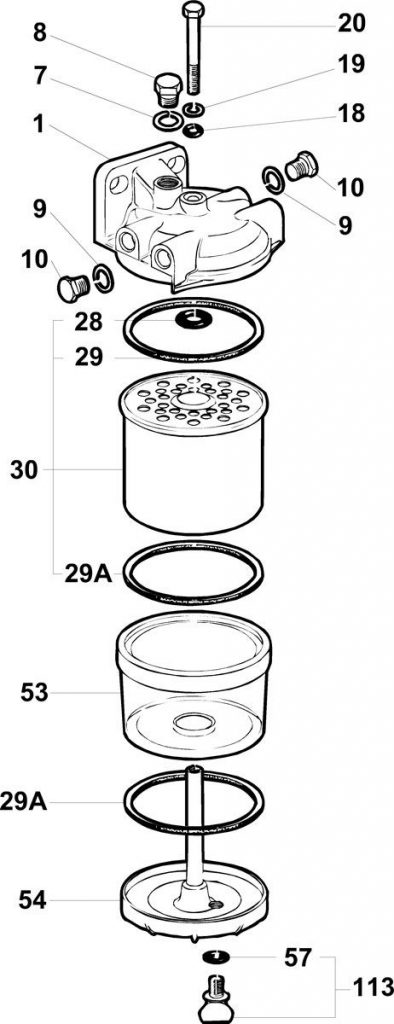
Racor-type Primary Fuel Filter
The primary fuel filter in a typical marine diesel installation is the one closest to the fuel storage tank(s). It is common for this to be a Racor-type filter so let’s spend a few minutes understanding these.
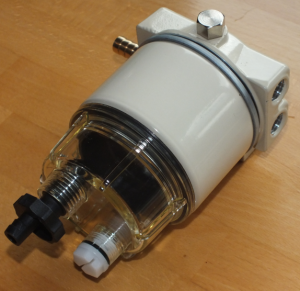
The features of a primary filter is generally a 10 micron oil filter to filter out any contaminants and a bulb to allow any water to separate out and be observed, and tapped off if necessary. This uses two laws of nature to our advantage;
- Diesel oil is lighter than water
- Oil and water do not mix very well, and will tend to separate
Unfortunately, the second phenomenon is somewhat diminished by the increasing use of bio-diesel, which tends to allow a little bit of water to be absorbed.
Diesel School: Click to learn more about Bio-Diesel

Contaminants in your fuel
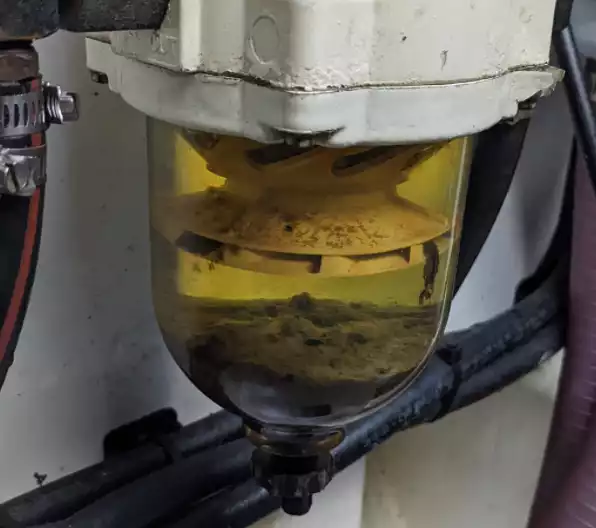
The diesel engine is a surprisingly reliable and efficient machine but woe betide any sailor who allows dirty fuel to make its way to the high pressure side of your diesel delivery system. The injectors in your diesel engine force the fuel in to the cylinder through a hole that might have a diameter of about one fifth of a millimeter. If any contaminants block this hole, you will get anything from incomplete burning (are you seeing grey smoke?) to engine cut-out. This is why diesel bug is so great a concern.
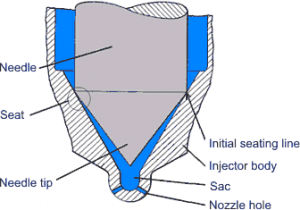

Fuel flow in a Racor-type filter
Fuel in from tanks
Many Racor-type filters have options of where to attach the fuel line from the tank(s). This helps keep your installation tidy and reduces the need to bend fuel lines on a tight radius. Unused inputs and outputs are blanked off. The fuel enters the filter unit through ports on the top casting and flows into the centre of the changeable filter element.
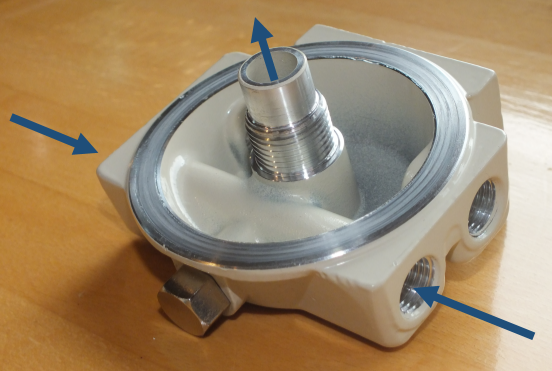
Filter unit top casting
The top casting of the filter unit can accept fuel on either side, but these ports are linked. There are not two separate channels through the filter and connecting another device to the secondary output port (such as a diesel cabin heater) may cause a vacuum on the fuel supply for your engine. That said, many installations have exactly that set up but be careful that the flow rate of fuel can supply both devices, or don’t run your heater when you are under engine power.
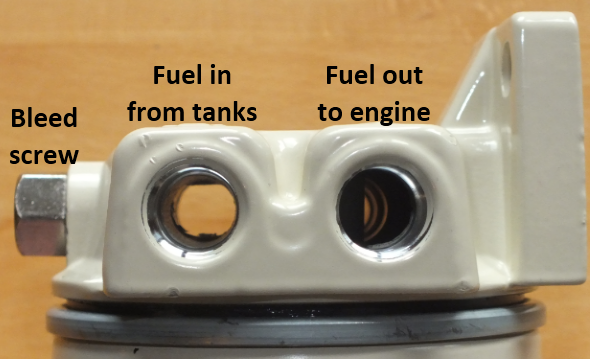
The filter cartridge
The fuel from the tanks then flows through the threaded protrusion and in to the centre of the filter cartridge. The bottom of this filter cartridge is open to the plastic bulb which forms the bottom third of the filter unit. Any heavy particulates or contaminants that have come down the fuel line from the tanks will fall under gravity to the clear bulb. In the image, you can just about see the filter paper. This will prevent any particles of greater then 10 microns from getting any further along your fuel supply line. Additionally, any water should separate out at this stage and sink down in to the bulb.
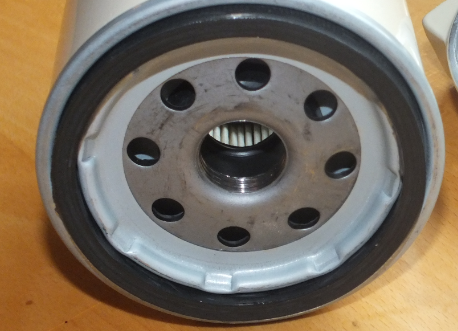
Fuel out towards engine
The clean, filtered fuel will come back out the eight small holes in the filter cartridge and be free to flow back out of the exit holes in the top casting and onward to your secondary (engine-mounted) fuel filter, which will filter any smaller particles out.
Technical Detail: The ports in the generic Racor-type filter shown are 1/4 BSP threads.
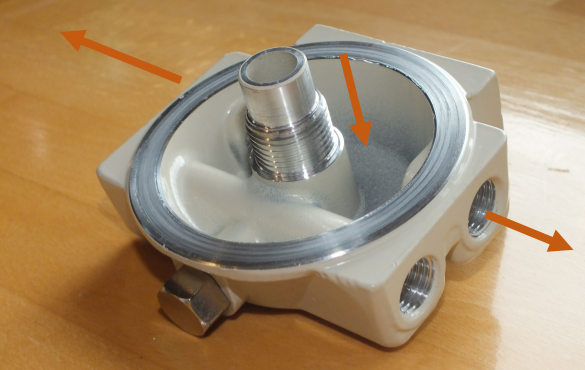

CAV-type Filter
Similar in function but slightly different in design is the CAV-type fuel filter. Fitted as the primary fuel filter in many yachts it does much the same job but the assembly is different. Rather than screw into place, the disposable filter element is kept in place by a large bolt [20] which can be released at the top allowing the base, bulb and filter to fall away. O-rings seal the unit as the bolt tightens. Some designs do not have the glass inspection bowl as the requirement for commercial boats was a metal bowl (which obviously reduces the option of a visual check somewhat).
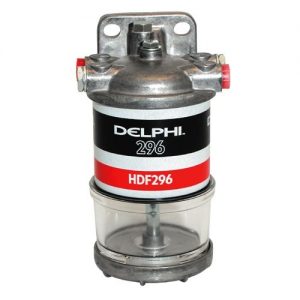
Note the top bleed bolt [8] at the top of the unit and the thumbscrew [113] at the base to allow water to be tapped off.
It is worth saying though, that many owners vastly prefer the Racor design to the CAV design. There is less chance of air ingress at the various seals (which would introduce air to your fuel and potentially stop your engine) and owners find it much easier to change the racor-filters rather than the CAV filters.
